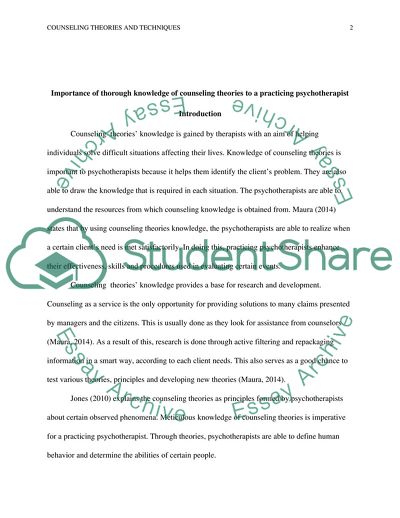Cite this document
(Importance of Thorough Knowledge of Counseling Theories to a Practicing Psychotherapist Coursework Example | Topics and Well Written Essays - 2500 words, n.d.)
Importance of Thorough Knowledge of Counseling Theories to a Practicing Psychotherapist Coursework Example | Topics and Well Written Essays - 2500 words. https://studentshare.org/psychology/1859224-counseling-theories-and-techniques
Importance of Thorough Knowledge of Counseling Theories to a Practicing Psychotherapist Coursework Example | Topics and Well Written Essays - 2500 words. https://studentshare.org/psychology/1859224-counseling-theories-and-techniques
(Importance of Thorough Knowledge of Counseling Theories to a Practicing Psychotherapist Coursework Example | Topics and Well Written Essays - 2500 Words)
Importance of Thorough Knowledge of Counseling Theories to a Practicing Psychotherapist Coursework Example | Topics and Well Written Essays - 2500 Words. https://studentshare.org/psychology/1859224-counseling-theories-and-techniques.
Importance of Thorough Knowledge of Counseling Theories to a Practicing Psychotherapist Coursework Example | Topics and Well Written Essays - 2500 Words. https://studentshare.org/psychology/1859224-counseling-theories-and-techniques.
“Importance of Thorough Knowledge of Counseling Theories to a Practicing Psychotherapist Coursework Example | Topics and Well Written Essays - 2500 Words”. https://studentshare.org/psychology/1859224-counseling-theories-and-techniques.


